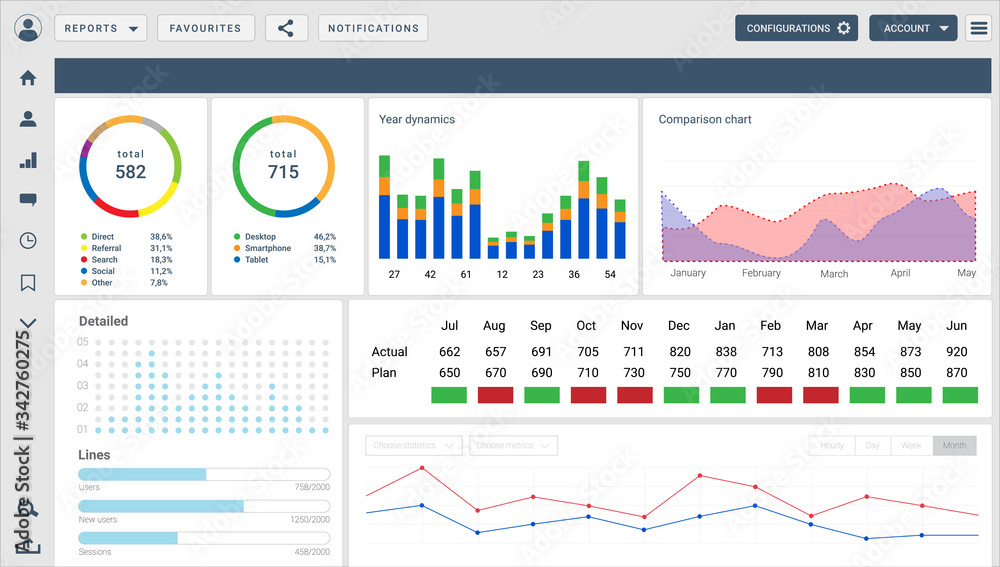Adobe Analytics is a powerful digital analytics tool that provides valuable insights into website performance, user behavior, and marketing campaigns. This article aims to provide a detailed guide on how to use Adobe Analytics effectively. Whether you're new to the platform or looking to enhance your existing knowledge, this article will walk you through the key steps and features to harness the full potential of Adobe Analytics.
1. Setting up Adobe Analytics:
To start using Adobe Analytics, you need to set up your account and create a new report suite. A report suite serves as a container for your website or app data. It helps organize and analyze the specific data related to your digital properties. Once you have set up your report suite, you need to implement the Adobe Analytics tracking code on your website or app. This tracking code enables data collection and sends information to Adobe Analytics for analysis.
2. Understanding the Interface:
The Adobe Analytics interface consists of various components that you need to familiarize yourself with. The menu bar provides access to different functions and settings, while the navigation menu helps you navigate between different reports and features. The workspace is where you can view and analyze data. Understanding these interface elements will help you navigate the platform efficiently.
3. Data Collection and Reporting:
Adobe Analytics collects data from your website or app through tags or tracking codes. These tags are placed on specific pages and events to capture user interactions. Once data collection is set up, you can explore the various reports and metrics available in Adobe Analytics. These reports provide insights into website traffic, user demographics, conversion rates, and other key performance indicators. The reporting interface allows you to customize and filter data to gain specific insights tailored to your needs.
4. Creating Custom Dashboards:
Custom dashboards in Adobe Analytics allow you to visualize data in a way that is most meaningful to you. You can create personalized dashboards with key metrics, graphs, and visualizations that provide a quick overview of your website's performance. These dashboards can be customized with the metrics and dimensions you find most relevant and can be shared with stakeholders or team members for collaborative analysis.
5. Advanced Segmentation:
Adobe Analytics offers powerful segmentation capabilities that enable you to analyze specific subsets of your data. By defining segments based on user attributes, behaviors, or other criteria, you can gain deeper insights into different user groups and their interactions with your website or app. Segmentation helps you identify patterns, target specific audiences, and optimize your marketing strategies accordingly. For example, you can segment users by geographic location, device type, or behavior to understand their unique preferences and tailor experiences for better engagement.
6. Funnel Analysis:
Funnel analysis is a critical feature in Adobe Analytics that helps you understand the user journey and identify areas of improvement in the conversion process. By creating a funnel, you can track how users move through specific stages, such as adding items to a cart, completing a purchase, or filling out a form. This helps you identify potential bottlenecks and optimize the user experience to maximize conversions. Funnel analysis provides insights into where users drop off in the conversion process, allowing you to implement targeted strategies to improve conversion rates.
7. Campaign Tracking:
Adobe Analytics allows you to track the performance of your marketing campaigns accurately. By appending campaign parameters to your URLs, you can track the effectiveness of different marketing channels, campaigns, and sources. This data can be used to measure campaign ROI, identify high-performing channels, and allocate resources more effectively. Adobe Analytics provides detailed reports on campaign performance, including metrics like impressions, clicks, conversions, and revenue.
8. Integration with Other Adobe Products:
Adobe Analytics seamlessly integrates with other Adobe Experience Cloud products, such as Adobe Target and Adobe Audience Manager. These integrations enable you to leverage data from different sources and create personalized experiences
based on user behavior and preferences. For example, by integrating Adobe Analytics with Adobe Target, you can deliver personalized content and offers based on user segments and behavioral data.
Conclusion:
Using Adobe Analytics effectively is crucial for making data-driven decisions and optimizing your digital strategies. By following the steps outlined in this comprehensive guide, you can harness the power of Adobe Analytics to gain deep insights into your website's performance, user behavior, and marketing efforts. Continuously exploring the various features, experimenting with different reports, and refining your analysis will allow you to unlock the full potential of Adobe Analytics and drive meaningful improvements in your digital initiatives.
